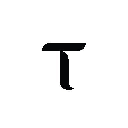 |
|
 |
|
 |
|
 |
|
 |
|
 |
|
 |
|
 |
|
 |
|
 |
|
 |
|
 |
|
 |
|
 |
|
 |
|

A Bitcoin transaction is a three-part process that begins with a sender, moves through the Bitcoin network, and concludes with a recipient. The transaction is then recorded on the blockchain, a public ledger that ensures transparency and enables anyone to track a Bitcoin transaction.
Can You Trace a Bitcoin Transaction?
Bitcoin transactions are traceable because the blockchain is a public ledger. Every transaction ever made is permanently recorded and accessible to anyone. While Bitcoin addresses do not directly reveal personal identities, they are pseudonymous and can be linked to individuals through additional information or patterns of use.
To trace a Bitcoin transaction, you can use a blockchain explorer, a tool that allows users to view details about transactions, blocks, and addresses on the Bitcoin blockchain. Popular blockchain explorers include:
Once you have a blockchain explorer, follow these steps to track a Bitcoin transaction:
1. Locate the Transaction ID (TXID)
The TXID is a unique identifier assigned to each Bitcoin transaction. It is typically a long string of letters and numbers, such as "0x9876543210abcdef". You can find the TXID in the transaction details of the sender's or receiver's wallet, or on a blockchain explorer by searching for the transaction amount, sender's address, or recipient's address.
2. Use a Blockchain Explorer
Once you have the TXID, go to a blockchain explorer and enter it in the search field. This will bring up a page with detailed information about the transaction, including:
- Status: Whether the transaction is confirmed, pending, or failed
- Confirmations: The number of times the transaction has been included in a block since it was confirmed
- Sender's Address: The Bitcoin address of the person who sent the transaction
- Recipient's Address: The Bitcoin address of the person who received the transaction
- Amount: The number of Bitcoin that were transacted
- Fee: The mining fee that was paid for the transaction
- Block Height: The height of the block in which the transaction was confirmed
- Timestamp: The date and time at which the transaction was included in a block
3. Interpret Transaction Details
The transaction details will show you the status of the transaction and how many confirmations it has. A transaction is considered fully confirmed after it has been included in a block six times. You can also use the transaction details to verify that the payment was sent to the correct recipient and that the amount is correct.
If a transaction is not yet confirmed, it means that it is still in the mempool and waiting to be picked up by a miner. You can track an unconfirmed Bitcoin transaction using a blockchain explorer like Mempool.space.
To track an unconfirmed Bitcoin transaction:
1. Go to a blockchain explorer like Mempool.space
2. Enter the sender's or recipient's Bitcoin address in the search field
3. This will bring up a list of all the transactions that are associated with the specified address. You can then find the unconfirmed transaction and view its details.
If your transaction remains unconfirmed for an extended period, it may be because the transaction fee is too low. You can try to accelerate the confirmation process by increasing the transaction fee. To do this, you will need to create a new transaction and send the same amount of Bitcoin to the same recipient, but with a higher transaction fee. The new transaction will replace the old transaction in the mempool and be confirmed more quickly.
You can also use a transaction ID to track any cryptocurrency transaction. By entering the TXID into a blockchain explorer, you can access the following details:
- Transaction Type: Whether the transaction is a payment, smart contract interaction, or other type of operation
- Sender's Address: The cryptocurrency address of the person who initiated the transaction
- Recipient's Address: The cryptocurrency address of the person who received the transaction
- Amount: The number of cryptocurrency tokens that were transacted
- Fee: The network fee that was paid for the transaction
- Block Height: The height of the block in which the transaction was included
- Timestamp: The date and time at which the transaction was included in a block
- Status: Whether the transaction was successful or failed
Blockchain explorers provide a clear and intuitive way to visualize these details.
In addition to basic transaction tracking, advanced users can also track Bitcoin addresses and analyze transaction flows to gain deeper insights into the movement of Bitcoin and other cryptocurrencies.
To track a Bitcoin address:
1. Go to a blockchain explorer like Blockchair or Coin Dance
2. Enter the Bitcoin address in the search field
3. This will bring up a page with detailed information about the address, including:
- Balance: The number of Bitcoin that are currently stored in the address
- Total Received: The total number of Bitcoin that have ever been received by the address
- Total Sent: The total number of Bitcoin that have ever been sent from the address
- Transaction Count: The total number of transactions that
免責聲明:info@kdj.com
所提供的資訊並非交易建議。 kDJ.com對任何基於本文提供的資訊進行的投資不承擔任何責任。加密貨幣波動性較大,建議您充分研究後謹慎投資!
如果您認為本網站使用的內容侵犯了您的版權,請立即聯絡我們(info@kdj.com),我們將及時刪除。
-

- 比特幣價格下跌,因為經濟衰退擔心抓地力市場,使交易者採取了防禦策略
- 2025-03-18 09:25:58
- 隨著經濟衰退的加劇,比特幣的價格正在下降,導致交易者採取更具防禦性的策略。
-

- Cardano(ADA)鯨魚轉儲100m代幣,在潛在價格下降之前
- 2025-03-18 09:25:58
- 在比特幣嘲笑85,000美元的突破之後,看漲的上升可能是在更廣泛的市場救濟集會之後進行的。
-

- CME集團的美國衍生品交易所首次交易的Solana(Sol)期貨
- 2025-03-18 09:25:58
- Solana(Sol)期貨在3月17日首次在芝加哥商業交易所(CME)集團的美國衍生品交易所交易
-

- CME集團的Solana(Sol)期貨推出市場情緒變化,預測價格恢復
- 2025-03-18 09:25:58
- 芝加哥商業交易所(CME)引入索拉納期貨的引發引發了市場情緒的轉變,分析師預測了潛在的索拉納價格恢復
-

-

- 比特幣(BTC)價格超過了$ 84,000
- 2025-03-18 09:25:58
- 比特幣(BTC)超過了$ 84,000的大關
-

-

-

- 當市場經歷急劇波動時,現在購買的最佳加密貨幣
- 2025-03-18 09:25:58
- 本文將探討值得考慮的頂級加密貨幣,每項加密貨幣都提供獨特的優勢,並在下一個市場上升的潛力。


























































